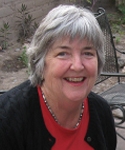Mariposa Community Health Center got its start in 1980 as a small clinic in Nogales, Arizona. It has grown over the years to be the largest provider of medical, dental and community-based health promotion and disease prevention services on the Arizona-Mexico border.
And in 1996, the clinic expanded its reach by becoming the first clinical site to link to the Arizona Telemedicine Program.
The decision was not a no-brainer. For many Nogales families, going to see a doctor in Tucson, 60 miles away, was a fun family outing, with lunch and shopping on the side. But for many others, the transportation logistics were next to impossible. For them, telemedicine would be a godsend.
But there were concerns about how well it would work.
“There were questions about security. How secure was the technology?” recalls Mariposa CEO Jim Welden, who has been with the clinic since 1980. “We explored that, and we also wondered how patients would experience this technology. Would they feel this was less than an in-person visit? It also meant having to coordinate the UA specialists’ schedules with our primary care physicians’ schedules.”
Eladio Pereira, MD, an internist and Mariposa’s medical director, remembers that doctors wondered if they could achieve comparable results with telemedicine. “The question was, do we need to be able to touch and examine the patient in person to make the right decision? At the same time, there was a lot of comment that this will help us move forward.
The final decision was pivotal. “It was really the first time that we had access for some of our patients to see specialists in Tucson,” Welden says. “It was the first time we could meet the needs of some of our patients who couldn’t get to Tucson.”
A top priority has been connecting patients with University of Arizona (UA) rheumatologists, in part because of the longstanding shortage of rheumatologists in Arizona. More recently, Tucson community rheumatologists have joined the network.
“Rheumatology is a very challenging field,” Pereira says, because many of the new drugs – called biological response modifiers – are highly specialized, and carry significant risk, such as making patients more susceptible to infection. “Only an expert should prescribe them,” Pereira says.
“Working with the UA and Tucson community doctors has been really, really helpful to us. We’ve been able to get our patients seen quickly. And that is so important, because we now know that the earlier you treat rheumatoid arthritis, the lower the risk of deformities.”
“The relationships between primary care physician and specialist is significantly enhanced by the fact that they can see the patient at the same time,” Pereira says.
“Also, we, the primary care physicians, have our limitations, and I think it’s really healthy to bring that up in front of the patient,” he says. “The patient realizes you are not an expert in everything, but you’re seeking help for that patient’s benefit.”
Welden and Pereira will never forget one consult that had a surprise ending.
Ziad Shehab, MD, is a UA pediatric infectious-disease expert who has been caring for children with HIV and AIDS for 30 years. About 10 years ago, he consulted with a Mariposa physician who was caring for a 5-year-old girl who was born with HIV. She and her family were living in Nogales, and traveling to Tucson to see a specialist was difficult.
At the end of his video-conference visit with the girl and her pediatrician, Shehab said to her, “I’m so sorry I can’t give you a hug.”
In response, the child walked over to the telemedicine monitor and gave it a big hug.
The girl is now an adult – a tribute to the advances in HIV care, and to the importance of being able to be seen by a specialist, once the transportation barrier is removed.
Pereira and Welden agree that telemedicine is moving toward greater mobility, with smart phones, Skype and tablets having a larger role.
“We are moving toward doing consults with the patient at home,” Welden says. “We have patient navigators who are out visiting patients in their homes, which is a big plus for someone who is elderly or chronically ill.
“But regardless of how the technology changes in the future, historically telemedicine has meant a lot to our providers and to the patients. It was absolutely a win-win.”

